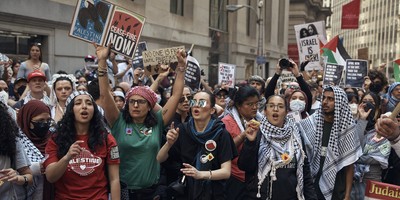Lew Wallace's Ben-Hur: A Tale of the Christ, written in the 1880s, is the epic story of a young Jewish prince who battled both a backstabbing friend and the Roman empire, overcame slavery and eventually experienced a life changing encounter with Jesus Christ. The tale is ready for a modern facelift, according to Lew's great great granddaughter. With her modernized version of Ben-Hur (available here), Carol Wallace is out to add a bit more clarity and girl power to the epic, she explains in an interview with Townhall.
"His book and items were all over the house and I was aware really young of the huge impact Ben-Hur had," Wallace recalls.
Although Ben-Hur was a presence in her childhood home, Wallace actually didn't read her great great grandpa's novel until 2013.
"I found his version really hard to read," she explained. "He was writing in a cheeky style that was really tough to take. There were times I was rewriting it when I wasn’t even entirely sure what he was trying to say and his book is really long."
For contemporary audiences, she said, the narrative has to move faster than it did in the original.
"The thing that concerned me most was how to approach it," she recalled. "It was very clear to me I was going to have to follow his model very closely. No one in their right mind is going to want to second guess his research or rethink his approach to theology – these are all real hot topics so I just decided I would take his story and his point of view and bring it up to date. Once I figured that out, it was actually a lot of fun. Because it was just a question of cutting, making women more important and shifting the point of view around."
The only interpretation of Ben-Hur Wallace had seen before putting pen to paper was the 1959 film starring Charlton Heston, which won 11 Oscars the following year. Wallace explained she didn’t want to have too many images of Ben-Hur in her head, so she watched the film once and tried not to think about it as she was reimagining the story.
Recommended
Of course, all eyes will be on how she interpreted the iconic chariot race. In the 1959 film, this scene became an instant cinematic classic. It was an astounding visual achievement for its time and Wallace wanted this scene to read like a thriller in her book.
The author was also intrigued to rewrite the leprosy scene, a moment she said has always fascinated her.
"As a girl, I found Ben-Hur often male-dominated so the leprosy business where Ben-Hur’s mother and sister contract leprosy from their long imprisonment in a Roman prison - that to me was extremely traumatic."
As anyone who's read the book knows, the two characters were cured by Jesus during the Palm Sunday procession.
"That’s incredibly dramatic and that was really fun to write because in Ben-Hur’s eyes and consciousness witnessing to women he loved so much," Wallace continued. "He suddenly emerges from these two lepers he had just seen on the side of the road. So it’s a transformation scene and that’s always fun."
A new film adaptation of Ben-Hur is soon to be released as well. Wallace says she and her husband had the incredible opportunity to be invited on the set in Rome while Paramount Pictures was filming and after she had finished writing her book.
"I had spent all this time living in Ben-Hur’s world," she explained. "I cannot describe what it was like to see the stadium the producers had built to shoot the chariot race – it is astonishing – it is full size."
Wallace also got to go down on the track where they filmed the new chariot race, stand in the sawdust and look up at the stands, an experience she described as "chilling."
When Lew Wallace finished writing the original Ben-Hur, he became a more convinced Christian, his great great granddaughter revealed in a separate interview. Did his great great granddaughter have a similar experience at the end of her writing process?
"It was especially interesting," she said. "The book, Lew’s book, begins with three magi and the search for Jesus and there’s a scene of the nativity and then it ends with the Crucifixion. So imagine me, a writer and a churchgoer, having to imagine myself into those scenes and lift them out. That was extraordinary and it was a real privilege. It's an occasion for spiritual growth. I’m really grateful for that."
Wallace's Ben-Hur hits stores today and the new film comes out August 19. Check out the trailer below!
























Join the conversation as a VIP Member